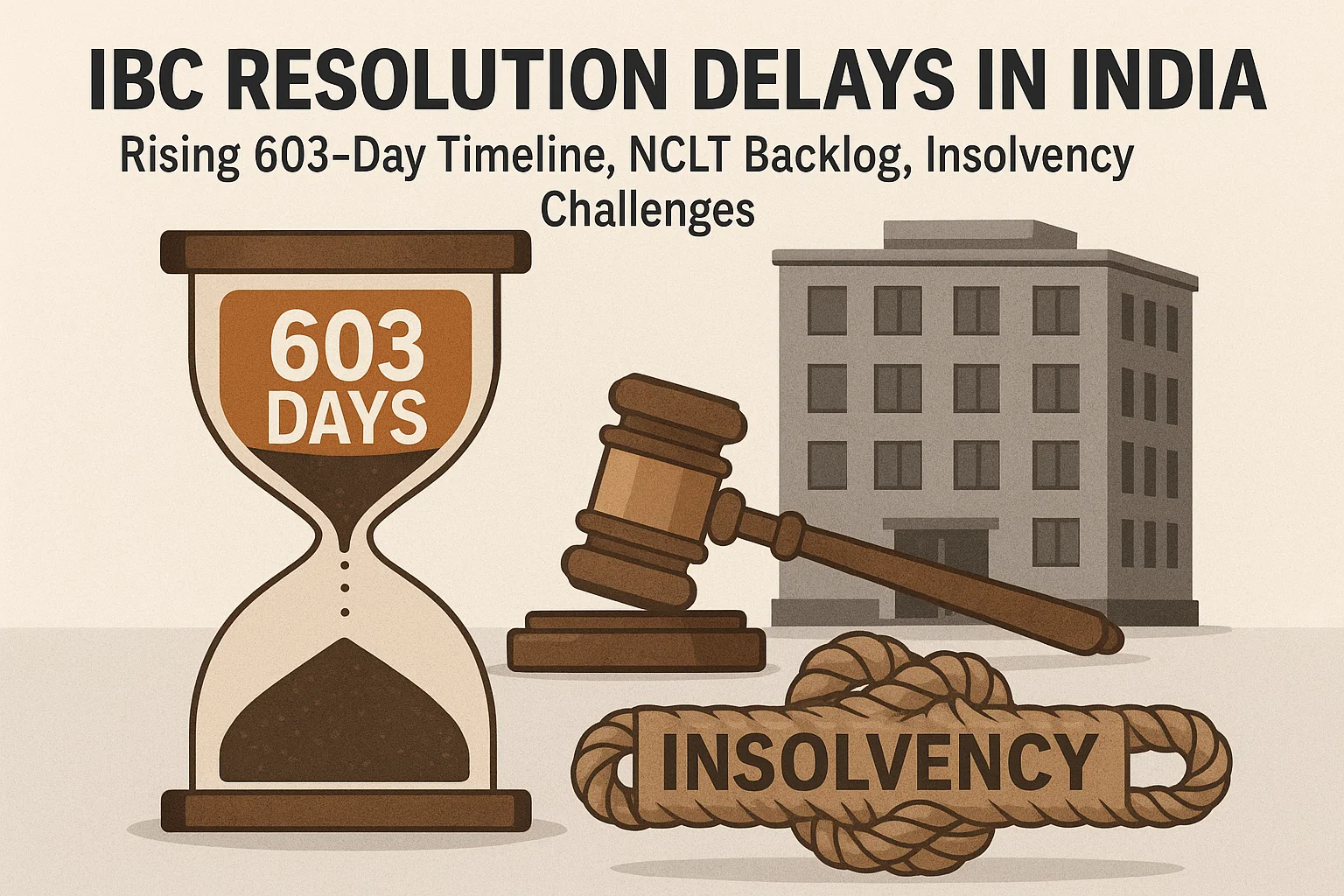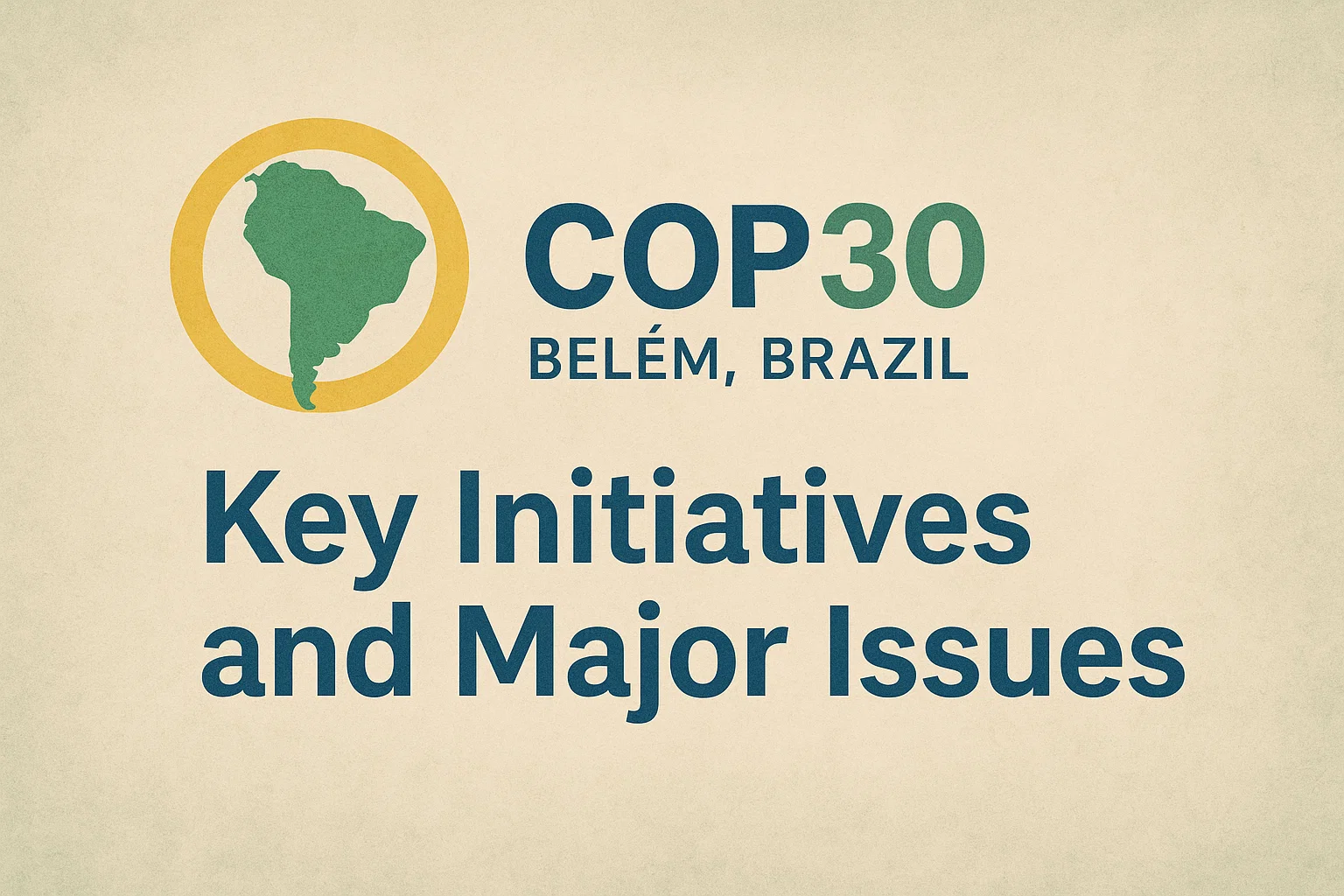IBC Resolution Delays in India: Rising 603-Day Timeline, NCLT Backlog, Insolvency Challenges
India’s IBC framework faces rising delays, with average insolvency resolution time hitting 603 days. Learn about IBC structure, CIRP challenges, NCLT backlog, liquidation trends, haircuts, creditor issues, and systemic bottlenecks shaping India’s insolvency ecosystem.
IBC Resolution Time in India: Delay Trends, CIRP Inefficiencies, and Structural Challenges
India’s insolvency ecosystem is under renewed scrutiny as the latest IBBI data reveals that the average resolution time under the Insolvency and Bankruptcy Code (IBC) has touched 603 days, nearly double the mandated 330-day limit. This trend raises critical questions about the effectiveness, efficiency, and long-term sustainability of India’s insolvency framework—originally designed to bring speed, transparency, and predictability.
What is the Insolvency and Bankruptcy Code (IBC)?
The Insolvency and Bankruptcy Code, 2016 is India’s unified and modern insolvency legislation. It replaced multiple fragmented and outdated laws such as SICA, RDDBFI Act, and certain provisions of the Companies Act, creating a single, streamlined framework.
Its institutional architecture includes:
-
Insolvency and Bankruptcy Board of India (IBBI) – the regulator overseeing insolvency professionals (IPs), information utilities, and overall compliance.
-
NCLT & NCLAT – the adjudicating authorities for corporate insolvency cases.
-
Committee of Creditors (CoC) – the body that takes key decisions during the Corporate Insolvency Resolution Process (CIRP).
The IBC is built on three core principles:
-
Creditor-in-Control Model, ensuring lenders temporarily take over management.
-
Time-Bound Resolution, capped at 330 days including litigation.
-
Market-Driven Resolution, where eligible bidders propose revival plans.
Why Was IBC Needed?
Before 2016, India’s insolvency ecosystem was crippled by delays, inefficiencies, and poor recoveries. The World Bank Doing Business Report noted that recoveries often took 4–5 years, with recovery rates below 25%, leading to significant erosion of asset value.
Banks were battling rising NPAs—above ₹8 lakh crore by 2016 (RBI)—and required a strong legal deterrent against wilful defaulters. Additionally, India’s ambition to improve its Ease of Doing Business ranking demanded a modern exit framework that aligned with global practices.
Thus, the IBC was introduced as a landmark reform to restore credit discipline, accelerate recoveries, and strengthen investor confidence.
What Are the Major Concerns Today?
1. Rising Delays and Loss of Value
The latest IBBI quarterly data (July–Sept 2025) shows the average resolution time rising to 603 days, while liquidation cases are taking around 518 days. Delays cause stressed companies to lose customers, contracts, employees, technological relevance, and working capital—leading to a steep decline in realisable value.
2. High Share of Liquidations
Out of 8,659 admitted corporate debtors (till Sept 2025), 2,896 have proceeded to liquidation. This raises questions on whether the system is rescuing viable companies or merely facilitating structured liquidation—especially concerning for MSMEs, which form the bulk of cases.
3. Creditor-Initiated Dominance & Asymmetry
Nearly 60% of cases are filed by financial creditors, while operational creditors dominate defaults of below ₹1 crore. This imbalance highlights limited bargaining power and weaker institutional capacity among operational creditors.
4. Capacity Constraints in the System
NCLTs face heavy backlogs, and a shortage of insolvency professionals (IPs) adds friction. Procedural disputes—frequent in major cases—further prolong litigation. The Economic Survey 2022-23 explicitly flagged these structural bottlenecks.
5. Haircuts in High-Value Resolutions
Even though recoveries improved to 93.8% of fair value in Sept 2025 (as per IBBI), several large cases in sectors like infrastructure and power continue to witness substantial haircuts due to delayed resolutions and asset depreciation.
Conclusion
IBC remains India’s most significant financial-sector reform in decades, but the rising resolution timeline undermines its core promise of speed and value maximisation. Strengthening NCLT capacity, enhancing IP availability, discouraging frivolous litigation, using technology for faster case management, and empowering operational creditors can restore the original intent of IBC—swift, transparent, and value-preserving insolvency resolution.
Subscribe to our Youtube Channel for more Valuable Content – TheStudyias
Download the App to Subscribe to our Courses – Thestudyias
The Source’s Authority and Ownership of the Article is Claimed By THE STUDY IAS BY MANIKANT SINGH




